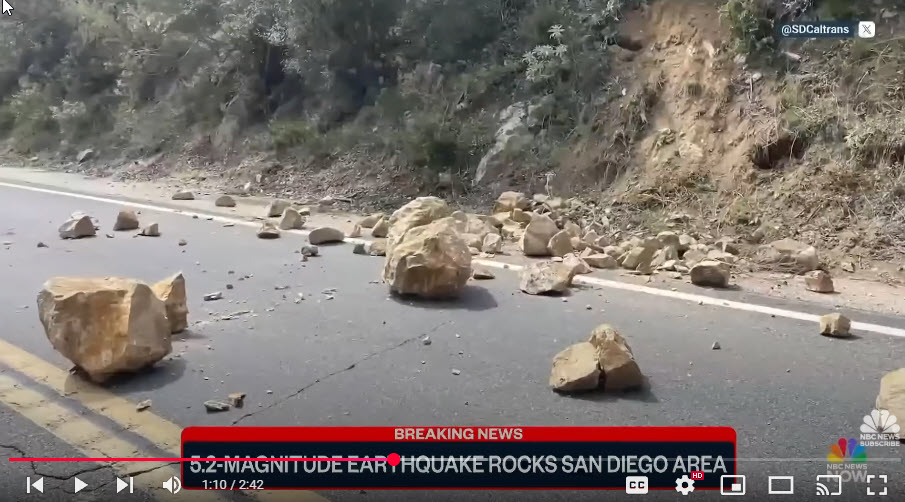Southern California experiences a sharp jolt as a magnitude 5.2 earthquake centered near Julian shakes the region, with tremors felt from Tijuana to Los Angeles and Palm Springs. The quake, which strikes early Monday, causes minor damage but no reported injuries. Video footage from the San Diego Zoo shows startled elephants reacting to the tremor, briefly shifting in formation before returning to normal behavior. Zoo officials confirm all animals are safe and resume their routines without issue.
According to the United States Geological Survey (USGS), the earthquake originates at a shallow depth, allowing the shaking to be felt widely across the region. The USGS Shake Map data shows extensive geographic reach for a quake of this size. Residents in the mountain community of Julian, near the epicenter, report being startled awake as objects shook in their homes and some merchandise tumbled off store shelves.
California’s early earthquake warning system appears to work as designed, providing residents with a precious five to ten seconds of alert before the ground begins to move. Emergency response teams remain on standby, but initial assessments reveal only minor structural damage such as cracked walls and disrupted utilities in localized areas.
While the quake does not result in injuries or widespread infrastructure damage, it reignites longstanding concerns about the potential for a much larger earthquake—often referred to as “The Big One.” Dr. Pat Abbott, Geology Professor Emeritus at San Diego State University, offers insight following the incident. He acknowledges that while Monday’s quake is moderate in magnitude, it serves as a reminder of Southern California’s vulnerability to seismic events.
Dr. Abbott explains that the Southern California region is less likely to experience a magnitude 9.0 event like those expected in the Cascadia Subduction Zone in the Pacific Northwest, which includes Oregon, Washington, and parts of Alaska. However, he emphasizes that a significant earthquake—likely around magnitude 7.5 to 8.0—remains a real threat in the San Andreas Fault system.
Emergency preparedness officials urge residents to revisit their disaster readiness plans, emphasizing the importance of having go-bags, family communication protocols, and secure household items. California’s Office of Emergency Services reiterates that small to moderate earthquakes can precede larger events, although in this case, no aftershocks of major concern have followed.
The incident also highlights the usefulness of real-time public warning apps and regional alert systems. Several residents report receiving notifications seconds before the quake struck, underscoring the technological advancements in earthquake detection and public safety.
While there is no immediate indication of further seismic activity, geologists and emergency officials continue to monitor the region closely. They advise residents not to become complacent, stressing that Monday’s quake should serve as a drill rather than a disruption.



